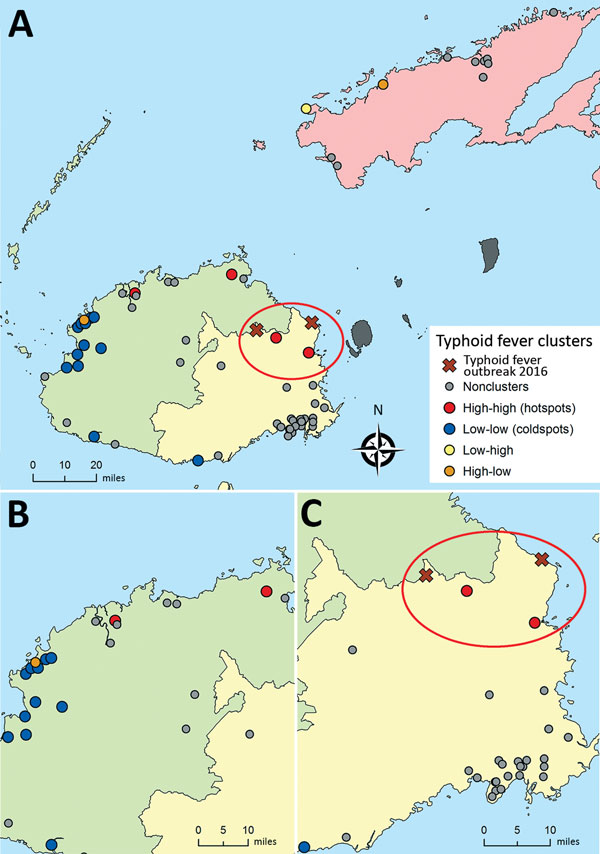Role of Environmental Factors in Shaping Spatial Distribution of Salmonella enterica Serovar Typhi, Fiji
Ruklanthi de Alwis

, Conall Watson, Birgit Nikolay, John H. Lowry, Nga Tran Vu Thieu, Tan Trinh Van, Dung Tran Thi Ngoc, Kitione Rawalai, Mere Taufa, Jerimaia Coriakula, Colleen L. Lau, Eric J. Nilles, W. John Edmunds, Mike Kama, Stephen Baker, and Jorge Cano
Author affiliations: London School of Hygiene and Tropical Medicine, London, UK (R. de Alwis, C. Watson, B. Nikolay, W.J. Edmunds, J. Cano); Oxford University Clinical Research Unit, Ho Chi Minh City, Vietnam (R. de Alwis, N.T.V. Thieu, T.T. Van, D.T.T. Ngoc, S. Baker); Oxford University, Oxford, UK (R. de Alwis, S. Baker); University of the South Pacific, Suva, Fiji (J.H. Lowry); Project Heaven, Suva (K. Rawalai); Ministry of Health and Medical Services, Suva (M. Taufa, M. Kama); Fiji National University, Suva (J. Coriakula); Australian National University, Canberra, Australian Capital Territory, Australia (C.L. Lau); World Health Organization Western Pacific Region, Suva (E.J. Nilles); Brigham and Women’s Hospital, Boston, Massachusetts, USA (E.J. Nilles); Harvard Medical School, Boston (E.J. Nilles)
Main Article
Figure 2

Figure 2. Local clustering of seroprevalence of typhoid fever in divisions in Fiji. Local Anselin Moran I analysis conducted for each division separately by using an inverse-distance weighting for the communities within 3 divisions. A) Northern, B) Western, and C) Central. High-high clusters (hotspots) are communities with high seroprevalence of antibodies against Salmonella enterica serovar Typhi Vi capsular antigen that are near other communities with high seroprevalence. Low-low clusters (coldspots) are communities with low seroprevalence of antibodies against Salmonella Typhi Vi antigen that are near other communities with low seroprevalence. Red ovals indicate locations of the typhoid outbreak in 2016 after Cyclone Winston and hotspots detected by local clustering.
Main Article
Page created: January 17, 2018
Page updated: January 17, 2018
Page reviewed: January 17, 2018
The conclusions, findings, and opinions expressed by authors contributing to this journal do not necessarily reflect the official position of the U.S. Department of Health and Human Services, the Public Health Service, the Centers for Disease Control and Prevention, or the authors' affiliated institutions. Use of trade names is for identification only and does not imply endorsement by any of the groups named above.
